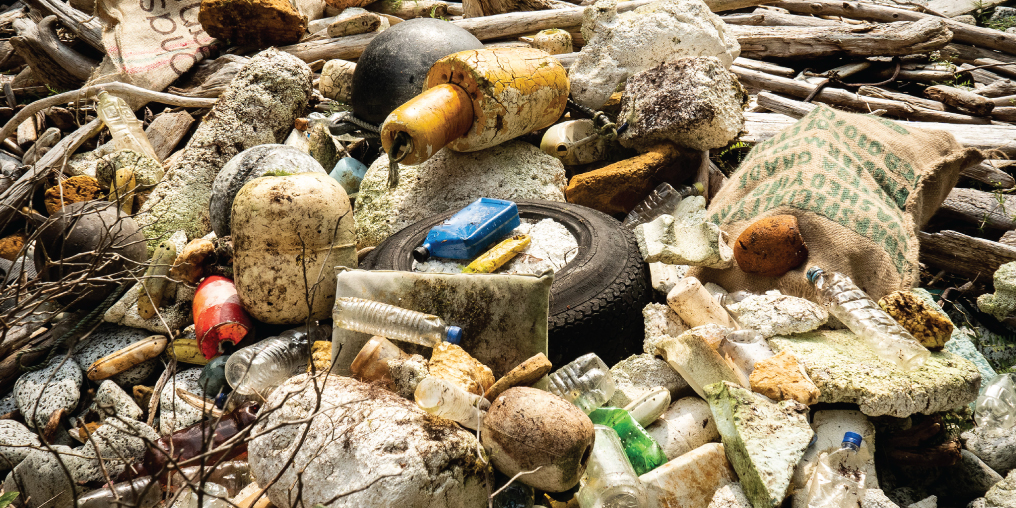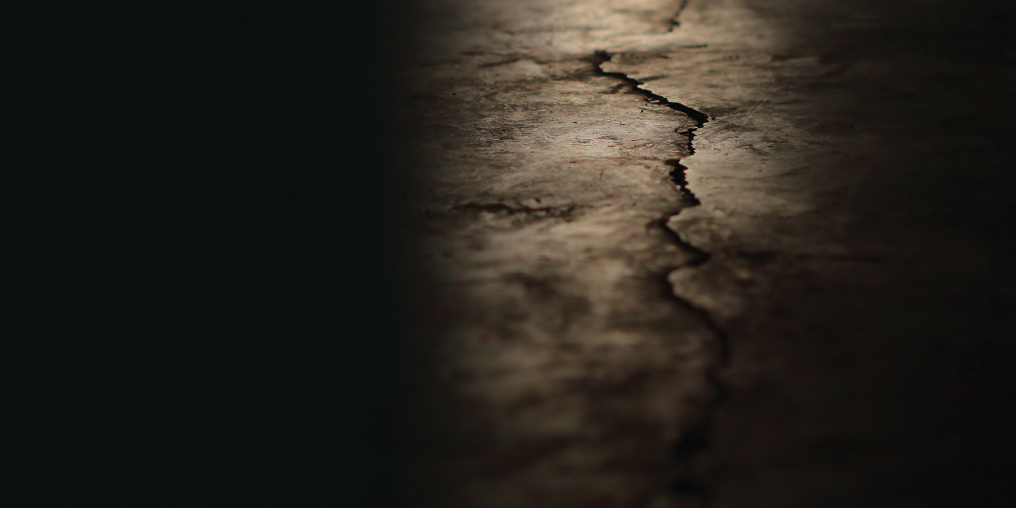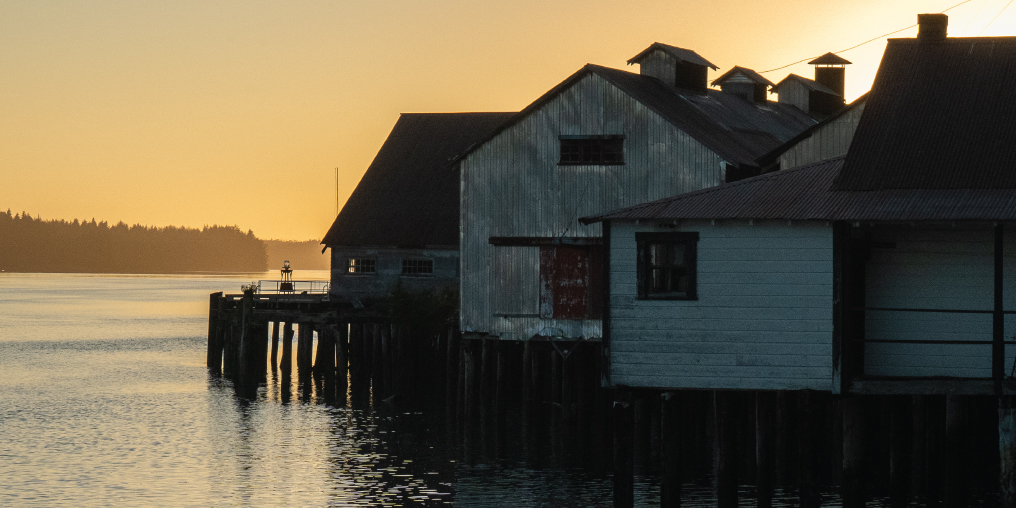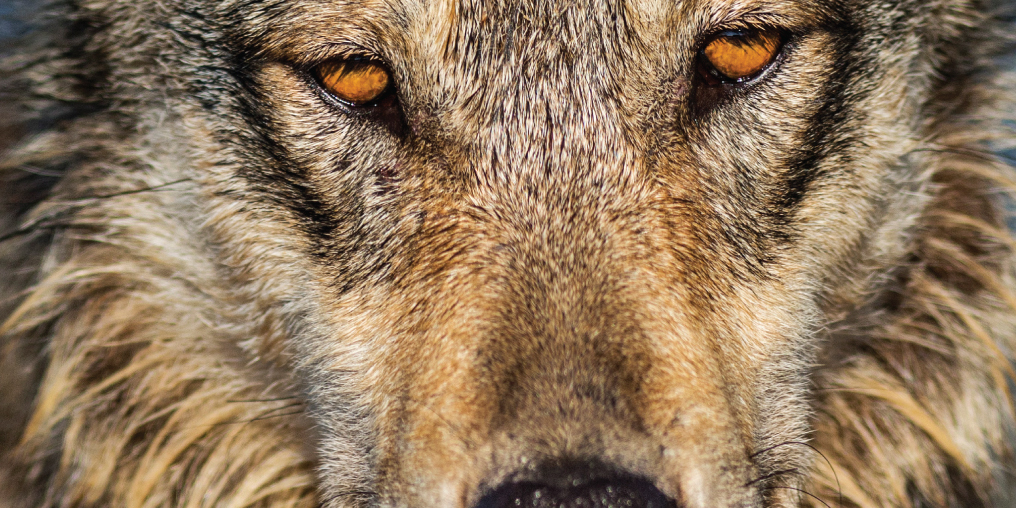It was late August in the Great Bear Rainforest and the salmon were starting to return to their nascent streams and rivers to spawn—or were they?
Typically, at this time of year, nine expedition ships belonging to seven different companies of the Small Ship Tour Operators Association of British Columbia (SSTOA) would be on their seasonal migration to this region to witness the annual salmon spawn. This year was different.
After all, it was 2020, and the adventure tourism industry had come to a complete halt in March. Because of COVID-19, borders were closed, airplanes were grounded, and cruise ships sat idle on the docks. The SSTOA expedition fleet suspended all tourism operations in response to the pandemic.
Then an idea began to emerge among the association members of how they could put their laid-off crew and vessels back to work in a different way.
Working in an industry that relies so heavily on a healthy environment, they asked themselves: What can we do to ensure it stays that way?
With support from the Wilderness Tourism Association of BC, the SSTOA members submitted a grant proposal to the British Columbia (BC) government, suggesting a shoreline cleanup along a large coastal area of the Great Bear Rainforest.
This area is part of the last intact tract of coastal temperate rainforest on earth, a 6.4-million-hectare region that spans from northern Vancouver Island up the coast to the Alaskan border.
Thousands of marine, terrestrial, and avian species call this region home, some of which are found nowhere else on earth, such as the rare white Kermode bear—or spirit bear—a genetic variation of the American black bear.
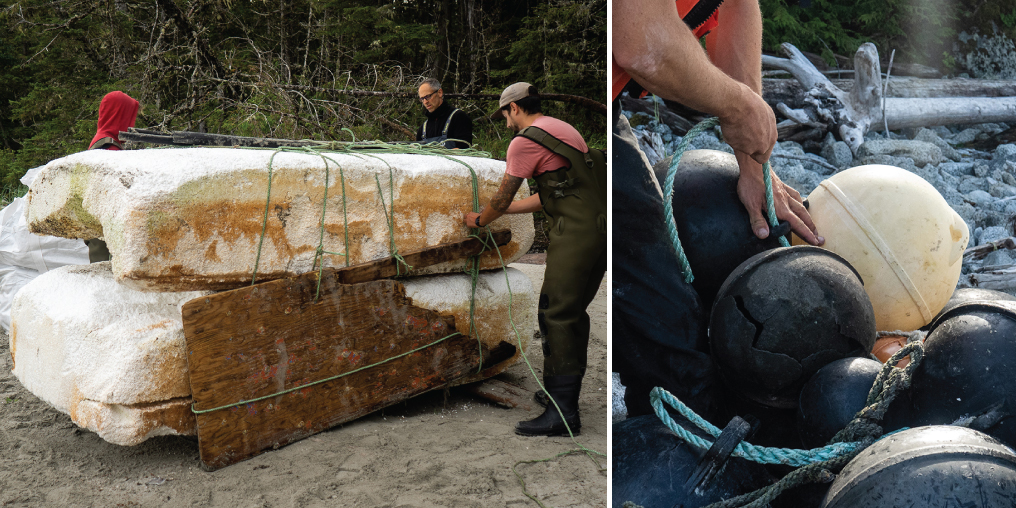
The area spans the territories of 26 First Nations who have been stewarding these lands and waters for millennia. The SSTOA works closely with these Indigenous communities who welcome their ships to the region every year.
There is a dark history on the BC coast—and around the world—of disease inflicted upon Indigenous nations. From smallpox to the Spanish flu, entire populations were decimated by way of colonizers introducing foreign pathogens into communities. In 2020, many Nations decided to remain closed to non-residents for the safety of their communities.
The leaders of the five Nations where this cleanup project would take place were consulted. After the Heiltsuk, Nuxalk, Wuikinuxv, Kitasoo/Xai’Xais, and Gitga’at leaders provided their support and recommendations, protocols were established to allow the operation to be conducted safely and respectfully.
“We’ve been working together for quite some time, and that collaborative approach worked really well,” says William Housty, a board member for the Heiltsuk Integrated Resource Management Department in Bella Bella.
Every year tourists from all over the world experience this incredible region first-hand, and I have been fortunate enough to join these visitors on their voyages. For the past five years I’ve worked for Outer Shores Expeditions, one of the seven SSTOA members.
During a typical tourism season, crew and guests visit some of the region’s iconic white-sand beaches. From a distance, it’s hard to tell that some of these beaches are littered with plastic, but “we see first-hand just how much debris is actually out there” says Dr. Russell Markel, marine ecologist and founder of Outer Shores Expeditions.
“The exposed outer islands of the Central Coast are notorious for big ocean swell and high-energy storms,” he adds. “Both are contributing factors for the debris getting onto the shore as well as the difficulty for removing it.”
The idea of a shoreline cleanup came in response to a marine debris report published in February 2020 by the provincial Ministry of Environment’s Parliamentary Secretary, Sheila Malcolmson. Beach cleanups are conducted along the coast every year, but something of this scale had never been attempted before.
“We didn’t know exactly how much debris was out there, but based on the report and our own experience on the coast, we estimated 25,000 to 50,000 kilograms of debris could be removed over two 21-day expeditions,” says Markel.
The initiative would allow the companies to temporarily rehire over 100 crew members and activate their vessels to address the issue of marine debris. The expedition ships would operate as a single unit, independently equipped with supplies and capable of supporting each other without the need to enter remote communities for provisions.
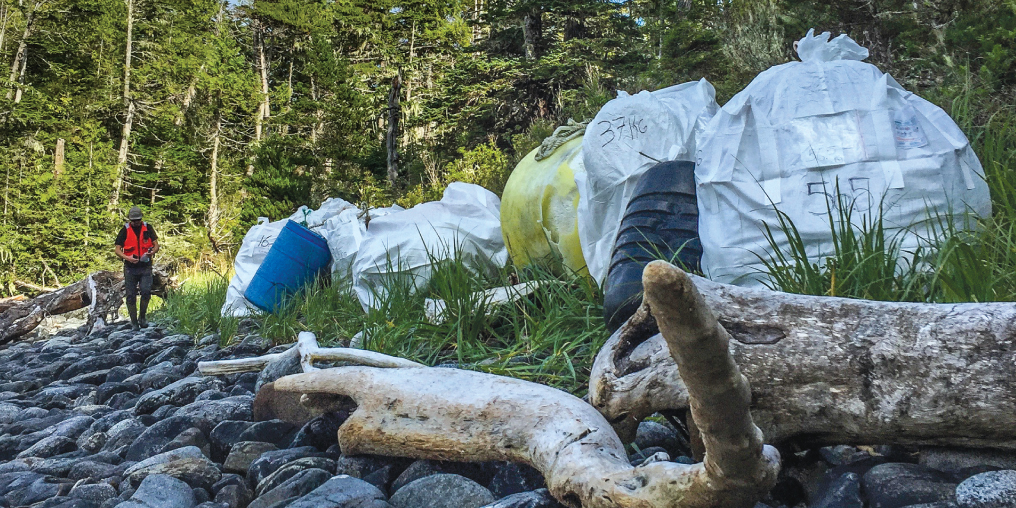
The logistics for getting debris off the shoreline in such remote regions are complex. The skilled expedition crews were used to operating in this marine environment, and motivated to tackle such an undertaking. Each company readied its ships and put crews on standby in hopes of approval. On August 11, the provincial government announced that $3.5 million would be granted to this initiative as part of the Clean Coast, Clean Waters Initiative Fund.
Within days, the ships were mobilized to embark on a shoreline cleanup that would cover over 1,000 kilometres of some of the most rugged and remote regions of BC’s coast.
When I was asked to join the expedition, I was thrilled to have one last swan song before my position would be dissolved (due to COVID). Although the rainforest species were still at the front of my mind, it was no longer about viewing them, but rather protecting the environment that sustains them.
Every day, crews deployed skiffs from the expedition vessels to begin the debris removal process. Getting onto the shoreline’s treacherous terrain was half the battle. Removing debris was the next step.
We’d assess the pocket beaches by clambering off the skiffs onto difficult, rocky landings to access coves loaded with driftwood. These are debris hotspots. Plastic bottles and other household and industrial items get trapped under logs, then broken down by the elements into tiny plastic micro-particles—microplastics.
We would gather the flotsam and load it into lift bags to be collected from the beaches by helicopter, placed on a barge, and towed back to Vancouver Island, where some items could be recycled or repurposed.
Fishing gear, both domestic and international, would prove to be a regular daily discovery. From plastic floats to ropes and nets, sometimes weighing several hundred kilograms, this “ghost gear” made up over 50 per cent of our findings. The task of cutting the items down to manageable sizes and getting it off the shore was another challenge.
The Nations’ protocols for this project outlined no-go zones to ensure the crew and vessels kept a safe distance from the communities. Some of the Nations received funding as part of the initiative to conduct their own shoreline cleanup in areas where the SSTOA were not permitted for various reasons, such as proximity to a community, food harvesting area, or culturally sensitive site.
“It’s another opportunity for creating experiences for Heiltsuk members to work in the Territory,” says Housty. “We’ll be continuing on that work in the spring collaboratively with some of the other Nations as well.”
After 42 days of sustained, combined effort, over 127,000 kilograms of debris had been removed from the shoreline. Data about the materials collected will be further synthesized into a report and delivered to the government in the hopes of informing management and policy in the future.
Although we were amazed by the sheer amount of debris collected, our efforts often felt futile. The overwhelming quantity of detritus truly seemed limitless, but removing that much garbage from the environment left us filled with pride. More than ever, everyone involved is determined to find long-term solutions for the global issue of marine debris.
“We need to keep the ocean the way it was, the way it’s supposed to be, as pristine as we can,” Housty adds. “And that’s why keeping our garbage out of the water is so important, and if we can all do our part, then it will be a better place for all of us.”
While we may not have witnessed the salmon spawn this year, we’re hopeful that our efforts will mean fewer obstacles for these migratory fish and other creatures that depend on a healthy Great Bear Rainforest—free of debris.

